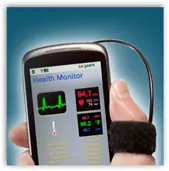
The world of medical devices is big and growing quickly. A current estimate by the World Health Organization suggests that there are over 2 million types of “medical devices” currently in use throughout the world. While many are non-electronic (stethoscopes, crutches, etc.), a growing number of medical devices incorporate electronic devices in their construction. Broadly, these electronic medical devices can be divided into three categories: diagnostic, monitoring, and intervention.
Diagnostic medical devices are used by a professional to observe facts about a patient’s health at a specific point in time and render a diagnosis. An example would be an electrocardiograph, which is used to measure the heart’s electrical activity. Readings recorded by the electrocardiograph measure the size and position of each heart chamber, and are utilized to evaluate, among other things, potential damage to the heart.
A monitoring medical device, on the other hand, is used to collect health data over time, usually for patients with an ongoing (“chronic”) condition. This data is then used by a clinician to make recommendations or changes to ongoing health care. An exciting development in monitoring devices is that many of them can be utilized remotely, enabling recommendations for treatment via telehealth or other electronic means of communication. A blood glucose sensor, utilized for patients with diabetes, is an example of one such device.
Lastly are “intervention” medical devices. These are used specifically to perform procedures across a broad scope of therapeutic areas. An excellent example would be a pacemaker – an electronic device surgically implanted near the heart that uses low-voltage electric shocks to maintain a regular heartbeat.
Cypress Technologies has decades of experience as a leading electronic contract manufacturer. For more information about our medical device manufacturing capabilities and products, contact us today.